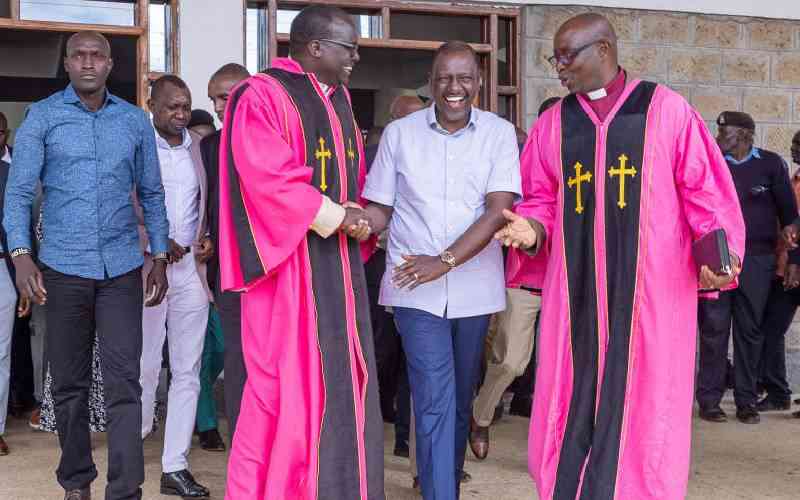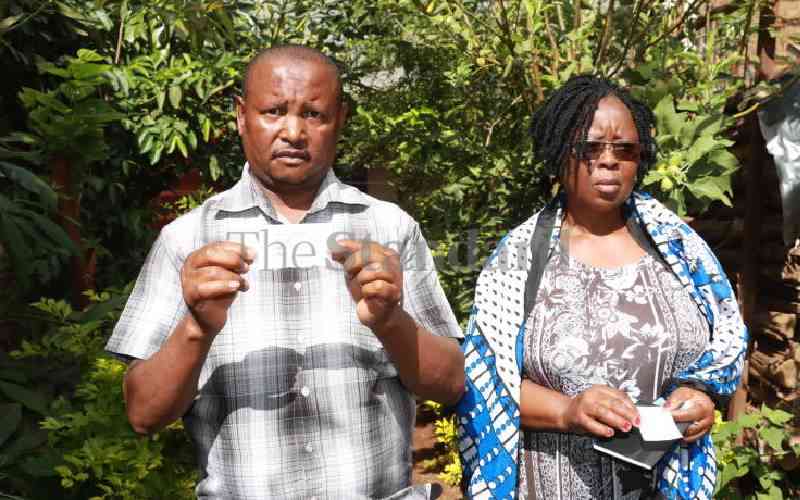
To quote his predecessor Uhuru Kenyatta at the height of the Covid-19 pandemic, President William Ruto sits on the horns of a dilemma.
The past month of Gen Z protests, whether or not they have been infiltrated as some claim, offer him the choice between, to use post-Covid language, leading Kenya through The Great Reset, or pursuing the cynical business as usual of political wheeler-dealing hoping public pressure dies down. The ball is firmly in his court.
On a day when more Gen Z pro-accountability (not anti-government) protests took place, this is important given the public’s low trust expectation that new phrases such as “broad-based political mechanism” and “broad-based government” have already caused public and political jitters around yet another all-inclusive i.e. handshake government. To be clear, a handshake government is not a coalition government, because the latter has an opposition formation to keep the regime in check. A handshake government is “free for all” governance.
The Great Reset, on the other hand, is about two things. Fixing government on one hand, and fixing Kenya on the other. Any dialogue cannot mix the two.
Before we tease out what this might or might not look like, here is a numerical interlude worth reflecting upon. Think about this as an illustration of the Great Reset that government needs. If we recall, the trigger for this Gen Z moment was Finance Bill 2024. When this bill was withdrawn, we were told Sh346 billion would need to be cut from the budget. We later heard this cut would be reduced to Sh177 billion, with the rest borrowed (Sh169 billion).
After which, Treasury informed MDAs – in the Supplementary Estimates 1 instruction on budget cuts - that the finance bill shortfall was now 344.3 billion. That Sh1.7 billion difference might be small at macro-level, but it exceeds the cost of hiring striking interns for a year. In this instruction, Treasury cut the spending ceiling by Sh141.4 billion (not Sh177 billion), split between Sh19.2 billion in recurrent and Sh122.2 billion in development spending. Welcome to numbers games!
Now, watch this. The day after the President fired his Cabinet, the National Development Implementation Committee of Permanent Secretaries chaired by the Prime Cabinet Secretary issued a communique saying they had adopted measures as proposed by the National Treasury to cut the recurrent budget by Sh35.7 billion and development expenditure by Sh133.5 billion. That’s Sh169.2 billion in spending cuts (not Sh177 billion) announced last Friday.
The next day, last Saturday, Supplementary Estimates I was quietly published. The total spending cut is now Sh156.4 billion, comprising Sh34 billion in recurrent and Sh122.4 in development.
It is pretty much impossible to keep up with this tinkering and tampering, lobbying and pork barrelling, budget padding and reallocating, winners and losers. It is deliberately incoherent and out of control. This is aggregate data, before we interrogate line item and programmatic detail.
The accountability point here is President Ruto lied to Kenyans by at least Sh20 billion in cuts!
Kenyans have until July 22nd to interrogate and comment on this, and other detail (like, say, the borrowing target) in these Supplementary Estimates which are actually the proper Original Estimates if we followed the spirit, and not just the letter, of the law. One item of interest might be the Sh4.7 billion CDF addition to cover outstanding payments. Because it is the only item that shows an increase in the entire development budget.
But let’s keep it short and simple today, since the dialogue is now on the back burner, and the new leadership obsession is with filling cabinet positions. To be clear, this is not the Great Reset that Kenyans seek. It is no longer about whom, if the what remains unclear. There will be many yawns of business as usual and sighs of disappointment when the new Cabinet is named, because this is not quite the point of the Gen Z-led accountability revolution.
On the other hand, it is not about defining a new “what”. To repeat for the umpteenth time, we have had Agenda Four, BBI and NADCO. Only the first of these had what I call a “people settlement”, the latter two were untidy political settlements. That’s why we have these protests.
As said prior to NADCO, what Kenya needs is a people settlement to drive a political settlement, not the other way round. Our leaders do not get it. The ask is simple: food on the table, money in our pockets, dignity and wellness in our daily lives and safety and security in our public places and private spaces. Everything else is detail.
Stay informed. Subscribe to our newsletter
Let’s imagine that our leadership returns to reason. If this happens, then the only dialogue that would happen is not open-ended when we have a constitution to guide us, but proactive in its proposals. I repeat, but start from the idea that a unifying presidency has three roles: socio-economy, governance and security. That sounds like three transformation packages to drive our Great Reset for the people. We could then add the fourth package around our politics.
The socio-economic package focuses on the economic reform already at the centre of the Kenya Kwanza agenda as well as social reform that brings in the church and non-state actors. Social reform is about a new and fresh vision of Kenyan society that aligns with the economic agenda.
The governance package is directed towards the demand-side of enhanced transparency, accountability and integrity (including the war on corruption and impunity) and a better supply-side around an improved policy to results cycle (policy, planning, budgeting, implementation, results).
The security package reframes our national security focus on external (intelligence and defence) and internal (intelligence, interior and policing) towards human security around political, community and personal security as well as food, health, environmental and economic security.
The political package is split into two. During elections and between elections. This leads us to electoral reform around both electoral justice and electoral management. Then democratic reform around Gen Z-style civic participation and proper support for democratic institutions.
This time last year, I wrote about these as dialogue packages. Time for dialogue is done. If President Ruto and his administration is to regain any credibility and rebuild trust with people, he needs to get ahead of the game with these as actionable implementation packages beyond flowery speeches. He needs to demonstrate that government is redesigned towards these aims.
This will begin his Great Reset. Then he can give us his Cabinet nominees. What, then Whom!
 The Standard Group Plc is a
multi-media organization with investments in media platforms spanning newspaper
print operations, television, radio broadcasting, digital and online services. The
Standard Group is recognized as a leading multi-media house in Kenya with a key
influence in matters of national and international interest.
The Standard Group Plc is a
multi-media organization with investments in media platforms spanning newspaper
print operations, television, radio broadcasting, digital and online services. The
Standard Group is recognized as a leading multi-media house in Kenya with a key
influence in matters of national and international interest.
 The Standard Group Plc is a
multi-media organization with investments in media platforms spanning newspaper
print operations, television, radio broadcasting, digital and online services. The
Standard Group is recognized as a leading multi-media house in Kenya with a key
influence in matters of national and international interest.
The Standard Group Plc is a
multi-media organization with investments in media platforms spanning newspaper
print operations, television, radio broadcasting, digital and online services. The
Standard Group is recognized as a leading multi-media house in Kenya with a key
influence in matters of national and international interest.










